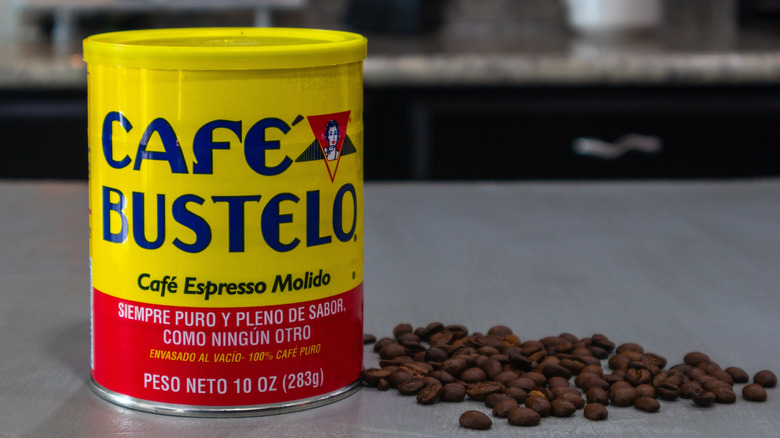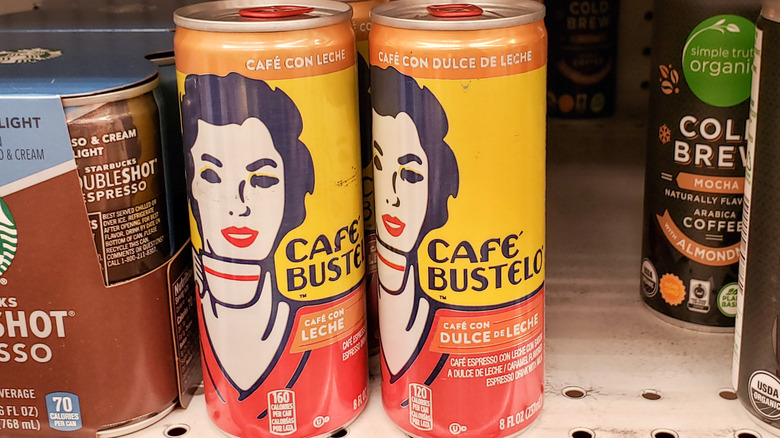How Café Bustelo Went From Theater Coffee To Hipster Icon
It's hard to find a bodega in New York that doesn't stock Café Bustelo. For such a vibrant brand, it might be older than you realize. In 1931, Café Bustelo opened its first storefront in El Barrio — East Harlem, New York. Gregorio Bustelo and his wife, Angelina Belvedere (whose face appears on the coffee can), had missed the strong coffee of Havana and started hand-grinding espresso-style coffee in their apartment. In those early days, their strongest market was the crowd enjoying a night out at the theater. Over the years, they developed a strong following.
But how did the ubiquitous red and yellow label evolve from a favorite among the older set to serving cold cans of café con leche at Los Angeles Fashion Week? Fast forward to 2007 at the Winter Music Conference in Miami, Florida, where the company's then head of marketing, J.P. Souto, brought cans of Bustelo Cool (café con leche) to give away. Just as the New York theater-goers needed something to stay awake, almost 100 years later, Souto found the concert attendees in Miami were eager for the same. "I was seeing people putting four or five of these things in their bag, like they were stealing something," Souto told The New York Times.
Before long, the company appeared at Coachella, Los Angeles Fashion Week, MTV Music Awards, and more. In 2008, it opened a flagship store in the hip Gansevoort Hotel in Miami, Florida.
What made Bustelo cool?
J.P. Souto's family had been in the coffee business for generations. His grandfather bought the Cuban coffee brand Café Pilón and Rowland Coffee Roasters in 1967; the Souto family bought Café Bustelo in 2000; they later sold these brands to J.M. Smucker Company in 2011. Under the Smuckers umbrella, Café Bustelo has increased its no-brew options such as instant coffee and continued to target a younger market with ready-to-drink iced coffee products, estimating it'll net $300 million in sales in 2024.
Though founder Gregorio Bustelo was from Spain, not Cuba, he had traveled extensively in Latin America. He connected with Spanish speakers in East Harlem, and convinced local store owners to carry his coffee. Through the years, it has remained affordable and has celebrated its connection to Hispanic culture. In 1917, when President Woodrow Wilson signed the Jones-Shafroth Act that granted U.S. citizenship to Puerto Ricans, the market for espresso-style coffee grew by tens of thousands of people. "Many enterprising Spanish-born immigrants — most of whom had spent time in Cuba or Puerto Rico — would establish businesses that would thrive, thanks in large measure to the patronage of the even larger and quickly expanding Puerto Rican population of the city," said New York University professor James D. Fernandez in Food Passages. Today, the Hispanic market is still a central part of the company's identity, even if the target market is younger than it used to be.

